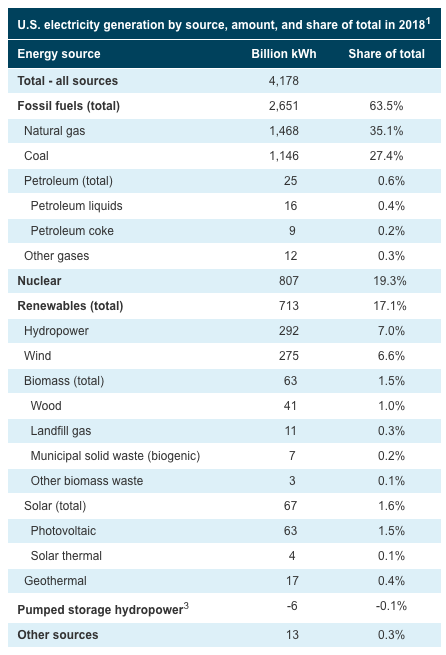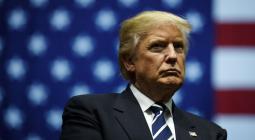Fact-checking Donald Trump’s take on wind energy.

watch the videos:
Grassley: Trump's claim that noise from wind turbines causes cancer was 'idiotic'
One of President Donald Trump’s new favorite political targets is Democrats’ Green New Deal, a sweeping approach to combating climate change. That plan embraces a greater reliance on renewable energy sources — like solar and wind — over a decade.
Trump has trained his fire on wind power in particular during several recent speeches, claiming that consumers face major blackouts from nothing more than a simple shift in weather. And Trump’s disdain for wind energy, as the Washington Post notes, has even deeper roots.
"When the wind stops blowing, that's the end of your electric," Trump told the Conservative Political Action Conference March 2. "Let's hurry up. ‘Darling, is the wind blowing today? I'd like to watch television, darling.’ "
Trump continued hammering wind energy later that month at a rally in Michigan, saying that if Hillary Clinton had won the election the United States would not be a global leader in energy production.
"You would be doing wind, windmills," Trump said March 28. "And if it doesn't blow you can forget about television for that night."
The president’s riffs on wind energy grossly oversimplify things — perhaps for comedic effect. But the latest White House budget proposal would slash funding for renewable energy programs across the country. So we thought his comments were worth checking.
‘Just because the wind stops blowing in one place does not mean the whole grid goes down’
Ensuring uninterrupted electricity when using renewable energy is a legitimate concern. Wind energy — and solar, for that matter — are considered "intermittent energy sources," because of their dependence on weather conditions. But the issue is a manageable one under the current system, experts said.
First off, the notion that a person gets electricity from only one wind farm is wrong. That’s because American energy consumers in virtually all cases get their power from an interconnected grid, which pools together a portfolio of different generators.
"No home connected to the continental U.S. grid is primarily reliant on the wind the occupant feels in their backyard," said Daniel Schwartz, a professor at the University of Washington and director of the Clean Energy Institute.
For example, in the western United States, Schwartz said, power generation and consumption is transmitted across roughly a dozen states and Canadian provinces.
"On a still day in Seattle, the wind is blowing in Montana, or California, or elsewhere," he said.
Michael Gillenwater, executive director of the Greenhouse Gas Management Institute, responded to Trump’s claim this way: "Just because the wind stops blowing in one place does not mean the whole grid goes down."
Experts noted that utilities typically use a mix of sources to generate energy, including some, like natural gas, that aren’t susceptible to running out if the winds are low or if clouds block the sun.
Increased reliance on renewables
The current energy system has successfully integrated renewables.
As of 2018, renewable sources made up around 17 percent of total U.S. energy. Among renewables, hydropower provided the most, at 7 percent, with wind energy a close second. Fossil fuels, on the other hand, accounted for nearly two-thirds of American power.

But what would happen to grid stability if the United States increased its reliance on sources like wind and solar?
That analysis hinges on several unknown variables, including how much would come from intermittent sources, whether nonrenewables would continue to serve as backups, and the pace of green technology development.
In his CPAC speech, Trump’s criticism of wind energy grew out of his broader disapproval of the Green New Deal.
It’s in that context that Trump has a point, said Benjamin Zycher, a resident scholar at the market-oriented American Enterprise Institute who has written a forthcoming book critiquing the Green New Deal.
"If you define the wind power as envisioned by Trump as part of a ‘100% renewable system’ or something approaching it — as defined, say, in the Green New Deal — then Trump is correct," he said.
Zycher said a 100 percent renewable system would face a series of practical challenges. Batteries cannot currently provide sufficient backup generation, he argued, so the only practical alternative to maintain grid stability would be from a non-renewable source, which would mean maintaining elements of the current system.
There’s some debate about whether the Green New Deal is truly pushing for a "100% renewable system," or some lower threshold.
The legislative language does not spell out what energy sources would comprise a new grid. In fact, its elasticity on this point appears to be something of a selling point. As Green New Deal co-sponsor Sen. Ed Markey, D.-Mass, said, "The resolution is silent on any individual technology. We are open to whatever works."
Rather, the proposal calls for "100% of power demand through clean, renewable, and zero-emissions energy sources." To some, the plan could encompasses more than just renewables, to include nuclear power, or even fossil fuels with carbon capture.
Schwartz, of the Clean Energy Institute, said the challenges of wind power are widely recognized in engineering circles. But he was bullish on the future of green technology.
"My reaction is optimistic," he said. "I see engineering challenges, not insurmountable barriers created by the laws of nature."
Already, some utilities use some of the surplus electricity they generate to pump water uphill, where it can be released downhill to generate electricity as needed. Going forward, researchers are working on additional methods, such as next-generation batteries, to store energy so it can be kept in reserve for slack periods for wind or solar generation.
Gillenwater agreed there’s a lively debate about the feasibility of building a 100 percent renewable system, and pointed us to this article from Institute of Electrical and Electronics Engineers’ magazine.
But he noted that "getting to about 80 percent is generally seen as not a problem technically or economically."
Gideon Weissman, a policy analyst with Frontier Group, said the National Renewable Energy Laboratory has done substantial research on what a greener grid might look like. He added that other research suggests that a renewable grid "has the potential to be more reliable and resilient than our current electric grid, since it would be less vulnerable to central disruptions."
Our ruling
Trump said, "When the wind stops blowing, that’s the end of your electric."
In virtually all cases, American energy consumers get their power from an interconnected grid, which pools together a portfolio of different generators. Practically speaking, just because the wind stops blowing in one place does not mean the whole grid goes down.
Right now, renewables account for around 17 percent of total U.S. power. Experts say there are some legitimate practical and technological challenges associated with moving to a grid that relies much more heavily on renewable energy than our current system. But engineers are aware of the issues and many believe they are not insurmountable.
We rate Trump’s statement Mostly False.
3 April 2019
![]()



